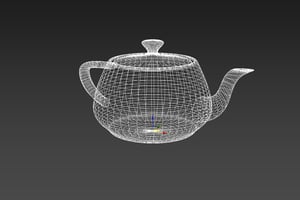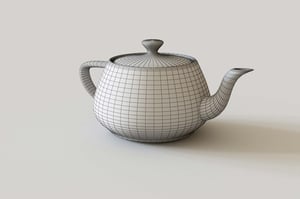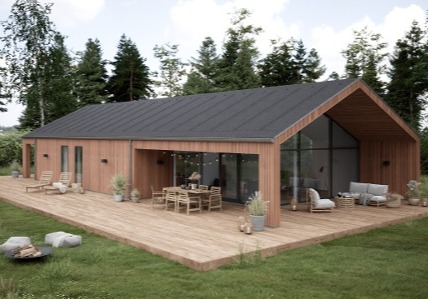Are you curious about the differences between CGI and 3D used to create images and animations? Or are they really just the same thing? Then you're in the right place!
In this article, I'll guide you through the complexities of CGI and 3D images and animations, highlighting their differences, similarities, and the significant impact they can have on your business.
Get ready to learn more about:
- What is CGI?
- Historical background and evolution of CGI
- Common uses of CGI
- What are 3D images and animations?
- What is 3D rendering?
- What are the differences between CGI and 3D?
- The advantages of using CGI and 3D images and animations
What is CGI?
Computer-generated imagery, often called CGI, is the process of creating still or animated visual content using computer software. CGI, therefore, refers to 2D and 3D content that is not made from raw footage or through manual composition but relies on technology.
The images created with computer-generated imagery (CGI) can vary in style. Some look ultra-realistic, almost like a photograph, while others look cartoon-like - imagine a Pixar movie or anime. Regardless of their level of realism, if a computer is involved in the design process, the result is considered CGI. This means that CGI can encompass 2D or 3D images, simple objects, or complex backgrounds and can be seamlessly integrated into live-action scenes or stand alone as a scene by itself.
This technology has undergone significant advancements since its initial applications in the 1960s and has become fundamental to modern visual media.
Learn more about the actual process of creating CGI images.
Historical background and evolution of CGI
Computer-generated imagery (CGI) dates back to its early stages when it was used to create simple wireframe models and basic geometric shapes. Over time, CGI has undergone significant advancements, making it possible to create the highly realistic and visually stunning images and animations we see today.
One pivotal moment in the history of CGI was in 1972 when the movie Gunslinger used 2D to show what they thought robots might see if they had vision. Then, in 1993, 3D entered with the premiere of Jurassic Park. This groundbreaking film prominently featured CGI-rendered dinosaurs seamlessly integrated into live-action scenes, effectively showcasing CGI's potential to transform the film industry's landscape.
Since then, the development of CGI has been fast-paced and constant. A development we have been a big part of here at Cadesign form since our humble beginning as a CGI and 3D agency in 1994 - just one year after Jurassic Park tore its way into cinematic history.
Common uses of CGI
Of course, CGI is not only experienced on the big screen. It's an incredible tool you can use to craft captivating images for a wide array of purposes, including visual art, advertising, anatomical modeling, architectural design, engineering, television shows, video game art, film special effects, augmented reality (AR), and virtual reality (VR) applications.
You're likely to come across computer-generated content numerous times every day - sometimes without you even noticing.
More in-depth examples of CGI use are:
- Product design: CGI is used to visualize prototypes and design concepts in 3D before
manufacturing the physical product. - Product visualization: Another use for CGI is to create high-quality, photorealistic images and animations of products for marketing and educational purposes. For example, the result can be regular product images or cut-throughs that let you see the insides of complex products and machines.
- Advertisement: In advertising, it's essential to show the product in the best possible way to
create preference and make it easier for customers to make a purchase decision. Even in a professional photography studio, that perfect setting can be challenging to create. Here, CGI is an ideal solution because lighting, surroundings, angles, and the product itself can all be manipulated and placed in any way imaginable, making every render the perfect shot every time. - Virtual showrooms and interactive experiences: CGI also enables immersive or interactive customer experiences, facilitating better product understanding and engagement.
- Film, television, and videos: From Hollywood blockbusters to corporate presentations, SoMe videos, and explainer videos, CGI can create special effects, environments, and characters that would be impossible or too costly to achieve with a traditional camera.
CGI has become an essential tool for businesses looking to push the boundaries of visual communication, making it easier to present complex ideas and designs engagingly and realistically and present products in the perfect settings. And because the technology used to produce CGI is less expensive than it once was, and methods have become more efficient, even smaller businesses can advertise their products with captivating imagery.
What are 3D images and animations?
3D images and film are three-dimensional representations of objects, environments, and characters, offering a more immersive and realistic experience than traditional 2D images.
You make 3D images by modeling objects in a three-dimensional space using computer software to define their shape, texture, and lighting. These images can then be rotated, scaled, and viewed from any angle, which makes it much easier to understand and appreciate the object's form and structure. Unlike 2D images, which are flat and limited to a single perspective, 3D images offer depth and spatial awareness, making them perfect for detailed visualizations of products or concepts.
3D animations extend the capabilities of 3D images by adding movement and interaction. They are created by manipulating 3D models and defining their motion, behaviors, and interactions within a virtual environment.
What is 3D rendering?
Once you've created a 3D model, it's possible to render it.
3D rendering is the intricate process of converting a three-dimensional virtual scene into a two-dimensional image. This involves meticulously designing and integrating 3D models, intricate lighting setups, detailed textures, and carefully positioned virtual cameras to make an infinite number of hyperrealistic final images and animations possible.
3D rendering is commonly used to create ultra-realistic and styled images for different purposes, such as advertisement, presentations, videos, and social media.




What are the differences between CGI and 3D?
There are many similarities between CGI and 3D, but they are not the same thing!
In short, CGI is an umbrella term that encompasses all computer-generated visuals, including 2D and 3D images and animations. In contrast, 3D specifically refers to three-dimensional models and animations. This basically means that all 3D models are created using CGI, but not all CGI is made in 3D.
The advantages of using CGI and 3D images and animations
Using CGI and 3D images and animations offers numerous benefits across various industries, significantly enhancing visual communication and marketing efforts.
High-quality, photorealistic visuals
CGI and 3D technologies allow you to create exceptionally detailed and realistic images and animations, including in ways that are impossible with a camera. This high level of quality is crucial in industries where accurate and visually appealing representations can significantly impact consumer perceptions and decision-making.
Cost-effectiveness and efficiency
Producing CGI and 3D visuals can be more cost-effective than traditional methods, especially when you need to change or update existing visuals. For instance, updating a 3D model or CGI scene with a new type of countertop for your kitchen line or a new color for a specific type of sofa is usually quicker and cheaper than reshooting a physical product or scene. This efficiency is particularly beneficial in product development and marketing, where time-to-market is of the essence.
Easier to visualize complex concepts and product parts
CGI and 3D allow you to visualize complex and abstract concepts that would be challenging to convey through traditional photography or illustrations. For example, the most critical parts of many industrial products and machines are often hidden away behind protective layers of metal or plastic. However, with 3D, it's possible to show cut-throughs or demonstrate intricate designs, systems, or processes, which provides a clearer understanding of the final product.
More user engagement and interaction
Interactive 3D animations and CGI can enhance user engagement. For example, virtual showrooms and 3D product configurators allow customers to explore products in a detailed and interactive manner. This improves the user experience and significantly boosts conversion rates as customers can more effectively comprehend and visualize the product compared to traditional images and videos.
Flexibility and creative freedom
Because CGI and 3D are created digitally, they offer endless creative freedom, allowing companies and marketers to explore exciting concepts that might be impractical or impossible to achieve physically. This flexibility is valuable when creating content such as imaginative marketing campaigns, assembly videos, unique product visualizations, and engaging content that stands out in front of the competition.
With CGI, compared to traditional images, illustrations, and videos, you can enjoy all these advantages by creating compelling visual content that captures the audience's attention and communicates your message more effectively and persuasively.


















